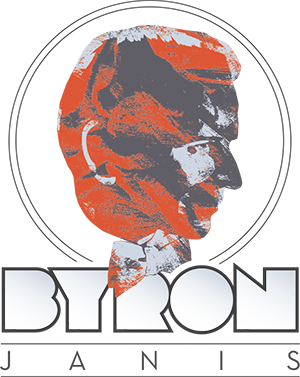By : TERRY TEACHOUT
March 22, 2017 4:57 p.m. ET
Byron Janis, who turns 89 this week, was one of what Gary Graffman, his colleague and contemporary, called the OYAPs—the great generation of “Outstanding Young American Pianists,” as they were customarily described by journalists, who crowded the concert halls of the world in the years immediately following World War II. Mr. Janis, Vladimir Horowitz’s first pupil, ranked high among the OYAPs, and to hear the stupendous recordings of Franz Liszt’s “Totentanz” and Richard Strauss’s “Burleske” that he made in the ’50s with Fritz Reiner and the Chicago Symphony (both of which are still available on CD) is to be left in no possible doubt of his immense talent. Even after psoriatic arthritis assaulted his hands and temporarily short-circuited his career, Mr. Janis managed to reconstruct his technique and continued to concertize to memorable effect well into the ’90s.
Mr. Janis’s musical interests have long ranged beyond the classics. Out Friday, “Byron Janis Live: On Tour” (Janis Eleven Enterprises), a collection of previously unissued live performances of pieces by Chopin, Haydn and Liszt that were recorded between 1979 and 1999, also includes solo-piano arrangements of several of Mr. Janis’ songs, thus reminding us that he is also a highly accomplished popular songwriter who, among other surprising things, has written the score for a musical version of “The Hunchback of Notre Dame.” Judging from the two resplendently tuneful numbers from the show, “Like Any Man” and “You Are More,” that Mr. Janis plays on “On Tour,” the concert hall’s gain has been Broadway’s loss.
The biggest surprise, however, is the encore, a piano duet called “By and Cy—More Paganini Variations.” On this track, Mr. Janis and Cy Coleman, a classically trained Broadway composer who wrote the score for “Sweet Charity” but started out as a jazz pianist of note, join forces to improvise on Paganini’s A Minor Caprice, the familiar solo-violin piece on which Brahms and Rachmaninoff produced their own sets of variations. Mr. Janis was a celebrated exponent of Rachmaninoff’s Rhapsody on a Theme of Paganini, and he also made an impressively idiomatic recording of George Gershwin’s “Rhapsody in Blue” in 1953. But to hear him and Coleman blend the two pieces together (so to speak) into what Mr. Janis calls “clazz” is something else again. Taped in 1978 before an audibly delighted audience, “By and Cy” is by turns witty, bluesy, wickedly clever and staggeringly virtuosic.
Time was when most classical musicians steered as far clear of jazz as possible—usually with good reason, too, since few of them had any comprehension of its swinging rhythmic language, which caused them to sound embarrassingly square whenever they essayed such jazz-flavored works as “Rhapsody in Blue.” (If you want a laugh, listen to the way Kurt Masur conducted it with the Leipzig Gewandhaus Orchestra. To call it “stodgy” would be tactful in the extreme.) Nowadays, though, it’s anything but uncommon for classical musicians, especially American-born ones, both to appreciate jazz and to play it well. When I went to Birdland the other night to hear Gary Burton’s last New York performance, I was pleased but not at all surprised to see Joseph Alessi, the principal trombonist of the New York Philharmonic, stroll up to the bandstand and jam with Mr. Burton on “Bags’ Groove,” a blues by Milt Jackson. You’d never have guessed that he’d been playing John Adams’s “Harmonielehre” earlier that evening at Lincoln Center.
As for Mr. Janis, he’s been listening to jazz his whole life long, and he and Coleman, who died in 2004, were childhood friends. Nevertheless, he is in no way identified with jazz or popular music: His specialty was the 19th-century romantics, Chopin and Rachmaninoff in particular, and nobody played them better. Neither was Van Cliburn, another OYAP who loved American popular song and who once taped an impromptu version of “You and the Night and the Music” (for which he supplied his own vocals) in the middle of a late-night recording session otherwise devoted to Chopin’s nocturnes. But he never approved it for release, any more than Vladimir Horowitz was willing to record the version of “Tea for Two” that he wrote after hearing Art Tatum play the song at a 52nd Street nightclub. Back then, classical musicians simply didn’t do such things.
Well, now they do, and I congratulate Mr. Janis for allowing us to hear him and Cy Coleman trade choruses on the A Minor Caprice. Tatum he wasn’t, but neither was Coleman: They were themselves, they loved jazz, and it is a joy to be able to hear this five-minute musical souvenir of their long friendship. It reminds me of what Tatum said to the jazz pianist Hampton Hawes when he heard him play in 1956: “Son, you hot.” You hot, too, Mr. Janis.
—Mr. Teachout, the Journal’s drama critic, writes “Sightings,” a column about the arts, every other week. Write to him at tteachout@wsj.com.

